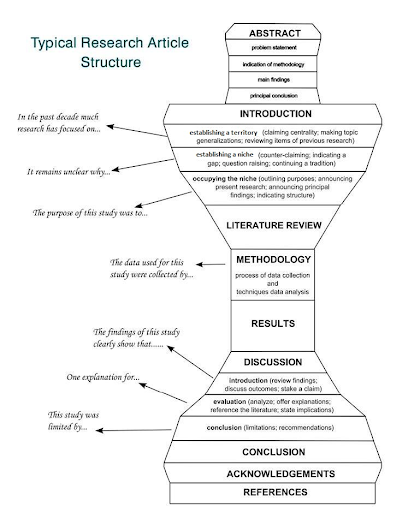The structure of a research paper can vary depending on the field of study and the specific requirements of the assignment or publication. However, a typical research paper can be structured in the following sections:
- Title Page: The title page is the first page of the research paper and should include the title of the paper, author's name(s), institutional affiliation(s), and date. The title should be concise and informative, and should accurately reflect the content of the paper.
- Abstract: The abstract is a brief summary of the research paper, usually around 150-250 words. It should provide a concise overview of the research problem, methodology, and main findings. The abstract should be written in a clear, concise, and engaging manner that draws the reader's attention.
- Introduction: The introduction section of a research paper should provide an overview of the research problem and its significance, as well as the research questions or hypotheses. It should also include a review of the relevant literature, which highlights the existing research on the topic and identifies gaps in the literature that the current study aims to address. The introduction should be written in a clear and concise manner, and should engage the reader's interest.
- Methods: The methods section of a research paper should describe the research design, data collection and analysis methods, and any limitations or ethical considerations. This section should be detailed enough to allow another researcher to replicate the study. The methods should be described in a clear and precise manner, and any potential limitations should be acknowledged.
- Results: The results section of a research paper should present the findings of the research, often including tables and figures to illustrate the data. The results should be presented in a clear and organized manner, with the most important findings presented first. The results should be described in a way that is objective and avoids interpretation.
- Discussion: The discussion section of a research paper should interpret and analyze the results, as well as discuss their implications and limitations. It should also connect the findings to the research questions or hypotheses and the relevant literature. The discussion should be written in a clear and concise manner, and should be based on the evidence presented in the results section.
- Conclusion: The conclusion section of a research paper should summarize the main findings of the research, restate the significance of the research problem, and suggest directions for future research. The conclusion should be written in a clear and concise manner, and should avoid introducing new information.
- References: The references section is a list of sources cited in the paper, formatted according to a specific citation style (e.g., APA, MLA, Chicago). This section should include all sources cited in the text, and should be formatted in a consistent and accurate manner.
Note that some research papers may also include additional sections, such as a literature review, theoretical framework, or acknowledgments. It's important to check the specific requirements of the assignment or publication to ensure that all necessary sections are included.














0 Comments